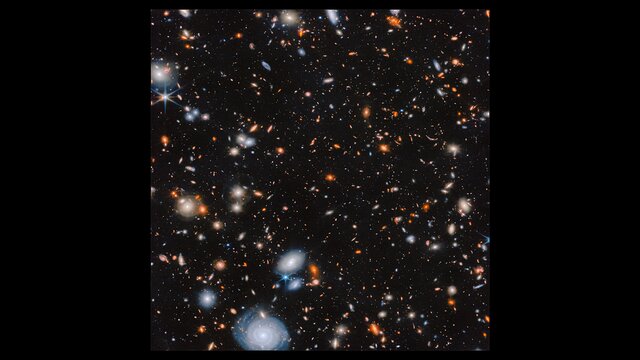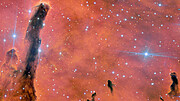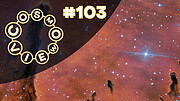.
A team of researchers has confirmed stars ring loud and clear in a
“key” that will harmonize well with the science goals and capabilities
of NASA’s upcoming Nancy Grace Roman Space Telescope.
Stars’ turbulent natures produce waves that cause fluctuations in
their overall brightness. By studying these changes — a method called
asteroseismology — scientists can glean information about stars’ ages,
masses, and sizes. These shifts in brightness were perceptible to NASA’s
Kepler space telescope, which provided asteroseismic data on approximately 16,000 stars before its retirement in 2018.
Using Kepler data as a starting point and adapting the dataset to match the expected quality from Roman, astronomers have recently proven the feasibility of asteroseismology with the soon-to-launch telescope and provided an estimated range of detectable stars. It’s an added bonus to Roman’s main science goals: As the telescope conducts observations for its
Galactic Bulge Time-Domain Survey — a core community survey that will gather data on hundreds of millions of stars in the bulge of our Milky Way galaxy — it will also provide enough information for astrono mers to determine stellar measurements via asteroseismology.
“Asteroseismology with Roman is possible because we don’t need to ask
the telescope to do anything it wasn’t already planning to do,” said
Marc Pinsonneault of The Ohio State University in Columbus, a co-author
of a paper detailing the research. “The strength of the Roman mission is
remarkable: It’s designed in part to advance exoplanet science, but
we’ll also get really rich data for other scientific areas that extend
beyond its main focus.”
The galactic bulge is densely populated with
red giant branch and red clump stars, which are more evolved and puffier than
main sequence stars. (Main sequence stars are in a similar life stage as our Sun.) Their high luminosity and oscillating frequency, ranging from hours to days,work in Roman’s favor. As part of its Galactic Bulge Time-Domain Survey, the telescope will observe the Milky Way’s galactic bulge every 12 minutes over six 70.5-day stretches, a cadence that makes it particularly well suited for red giant asteroseismology.
While previous research has explored the potential of asteroseismology with Roman, the team took a more detailed look by
considering Roman’s capabilities and mission design. Their investigation consisted of two large efforts:
First, the team members looked at Kepler’s asteroseismic data and applied parameters so the dataset matched the expected quality of Roman data. This included increasing the observation frequency and adjusting the wavelength range of light. The team calculated detection probabilities, which confirmed with a resounding yes that Roman will be able to detect the oscillations of red giants.
The team then applied their detection probabilities to a model of the Milky Way galaxy and considered the suggested fields of view for the galactic bulge survey to get a sense of how many red giants and red clump stars could be investigated with asteroseismology.
“At the time of our study, the core community survey was not fully defined, so we explored a few different models and simulations. Our lower limit estimation was 290,000 objects in total, with 185,000 stars in the bulge,” said Trevor Weiss of California State University, Long Beach, co-first author of the paper. “Now that we know the survey will entail a 12-minute cadence, we find it strengthens our numbers to over 300,000 asteroseismic detections in total. It would be the largest asteroseismic sample ever collected.”
The benefits of asteroseismology with Roman are numerous, including tying into exoplanet science, a major focus for the mission and the galactic bulge survey. Roman will detect exoplanets, or planets outside our solar system, through a method called
microlensing, in which the gravity of a foreground star magnifies the light from a background star. The presence of an exoplanet can cause a noticeable “blip” in the resulting brightness change.
“With asteroseismic data, we’ll be able to get a lot of information
about exoplanets’ host stars, and that will give us a lot of insight on
exoplanets themselves,” Weiss said.
“It will be difficult to directly infer ages and the abundances of
heavy elements like iron for the host stars of exoplanets Roman
detects,” Pinsonneault said. “Knowing these things — age and composition
— can be important for understanding the exoplanets. Our work will lay
out the statistical properties of the whole population — what the
typical abundances and ages are — so that the exoplanet scientists can
put the Roman measurements in context.”
Additionally, for astronomers who seek to understand the history of
the Milky Way galaxy, asteroseismology could reveal information about
its formation.
“We actually don’t know a lot about our galaxy’s bulge since you can only see it in
infrared light
due to all the intervening dust,” Pinsonneault said. “There could be
surprising populations or chemical patterns there. What if there are
young stars buried there? Roman will open a completely different window
into the stellar populations in the Milky Way’s center. I’m prepared to
be surprised.”
Since Roman is set to observe the galactic bulge soon after launch,
the team is working to build a catalog in advance and provide a target
list of observable stars that could help with efforts in validating the
telescope’s early performance.
“Outside of all the science, it’s important to remember the amount of
people it takes to get these things up and running, and the amount of
different people working on Roman,” said co-first author Noah Downing of
The Ohio State University. “It’s really exciting to see all of the
opportunities Roman is opening up for people before it even launches and
then think about how many more opportunities will exist once it’s in
space and taking data, which is not very far away.” Roman is slated to
launch no later than May 2027, with the team working toward a potential
early launch as soon as fall 2026.
The paper was published in
The Astrophysical Journal.
The Nancy Grace Roman Space Telescope is managed at NASA’s Goddard
Space Flight Center in Greenbelt, Maryland, with participation by NASA's
Jet Propulsion Laboratory in Southern California; Caltech/IPAC in
Pasadena, California; the Space Telescope Science Institute in
Baltimore; and a science team comprising scientists from various
research institutions. The primary industrial partners are BAE Systems,
Inc. in Boulder, Colorado; L3Harris Technologies in Melbourne, Florida;
and Teledyne Scientific & Imaging in Thousand Oaks, California.
To learn more about Roman, visit: https://www.nasa.gov/roman
About This Release
Credits:
Media Contact:
Abigail Major
Space Telescope Science Institute, Baltimore
Christine Pulliam
Space Telescope Science Institute, Baltimore
Permissions: Content Use Policy
Related Links and Documents































